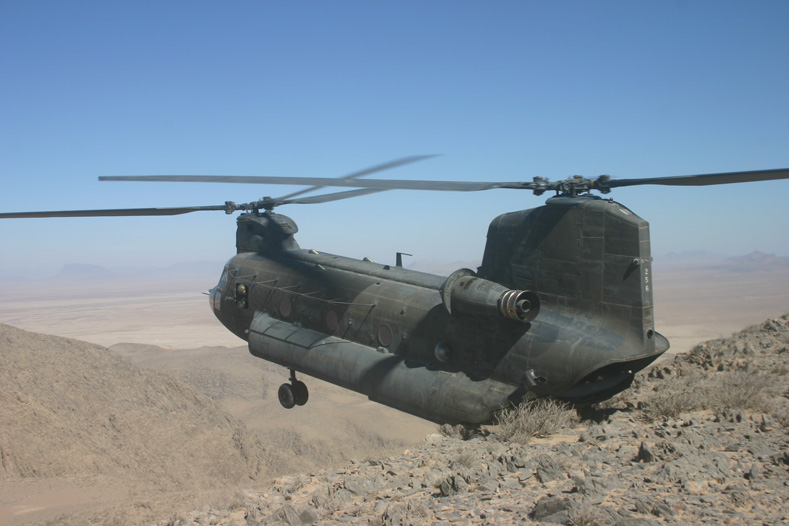Coming Extractions
Achieving an aft-wheel pinnacle landing in a CH-47 Chinook helicopter is challenging even before you add enemy fire, darkness, or time pressure
/https://tf-cmsv2-smithsonianmag-media.s3.amazonaws.com/filer/a6/38/a6386c27-482e-4739-a5d9-16e9ec0e8e7b/aft_pinnacle_chinook.jpg)
The Army’s CH-47 Chinook helicopter has flown a stunning but standard maneuver—the aft-wheel pinnacle landing—since 1962. In Iraq and Afghanistan, the move has reached its peak.
This month as many as 5,000 pairs of boots will leave the ground, with a goal to extract 33,000 by next September. Many will exit the same way they were inserted, by the back door of a CH-47.
In the photo above, Australian special forces practiced for insertion into Iraq in 2003 using a CH-47D for Operation Falconer.
In Afghanistan (photo below, in Kandahar), where clear and flat land is even more the exception, there are few places to land a 52-foot fuselage. Add the Chinook’s rotors and its length stretches to 99 feet. The Army’s other workhorse, the UH-60 Blackhawk, can nose its way in. As for a CH-47, just give a pilot a patch big enough for its 12-foot width, plus a few feet for a ladder and a prayer, whether on a rooftop or a wind blasted summit.
A pinnacle landing is challenging even before you add enemy fire, darkness, or time pressure. Winds gather force as they sweep up the slope. At the same time the Chinook’s engine loses ability with high altitude and high temperature.
Pilots need to adjust the power level to sustain a hover by considering the current altimeter and pressure-altitude reading as well as the engine temperature, any of which may be unreliable whether it’s from a lack of field data for remote deployments or combat damage to the Chinook.
“Make room for error; don’t figure in a wind factor when determining the power required to hover,” says Randall Padfield in Learning to Fly Helicopters. “If no wind, you have the correct figure; if windy, which is very likely, the increased performance will be gravy. Don’t go in unless you have a huge power reserve and an extremely important reason for landing at the site.”
